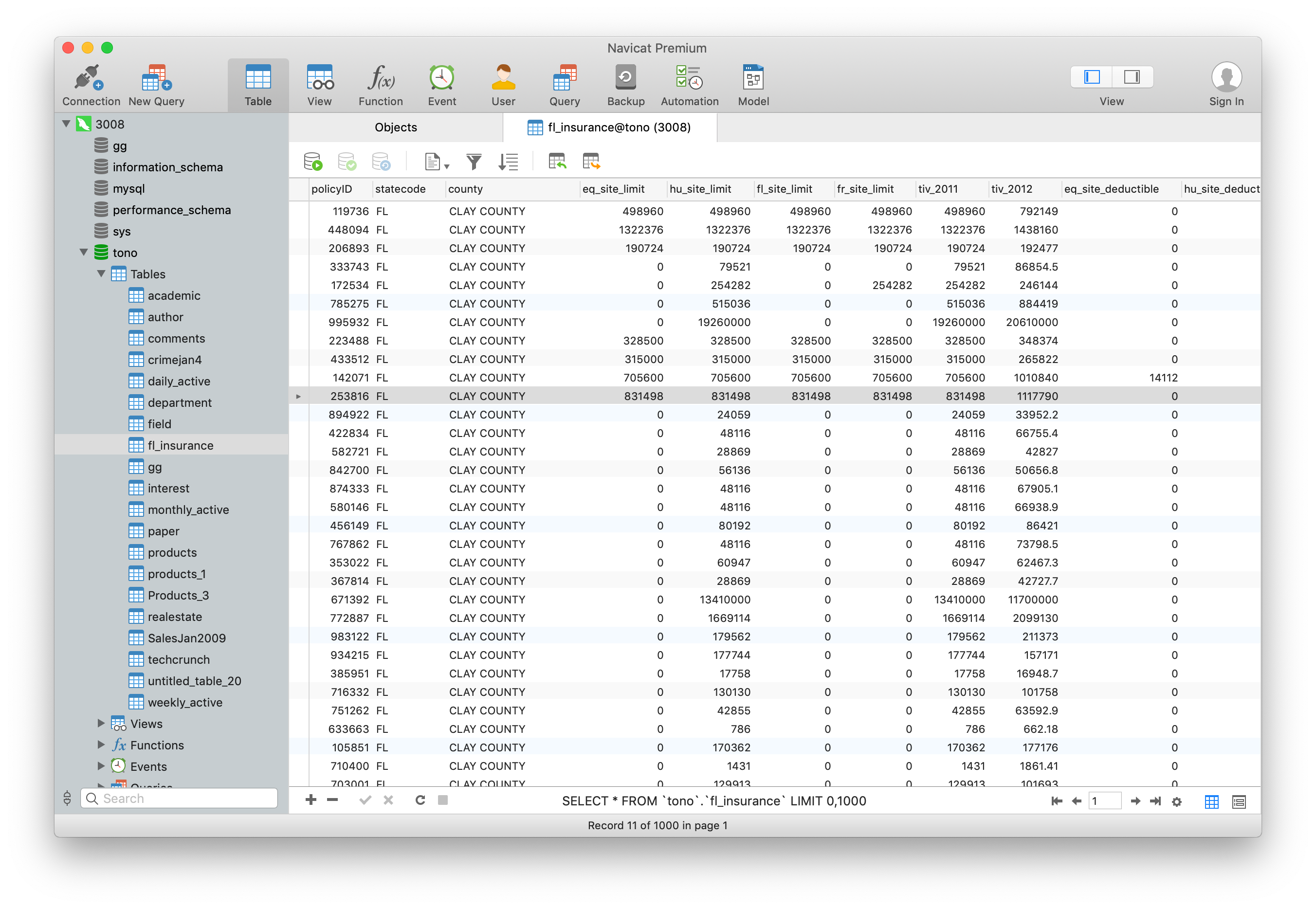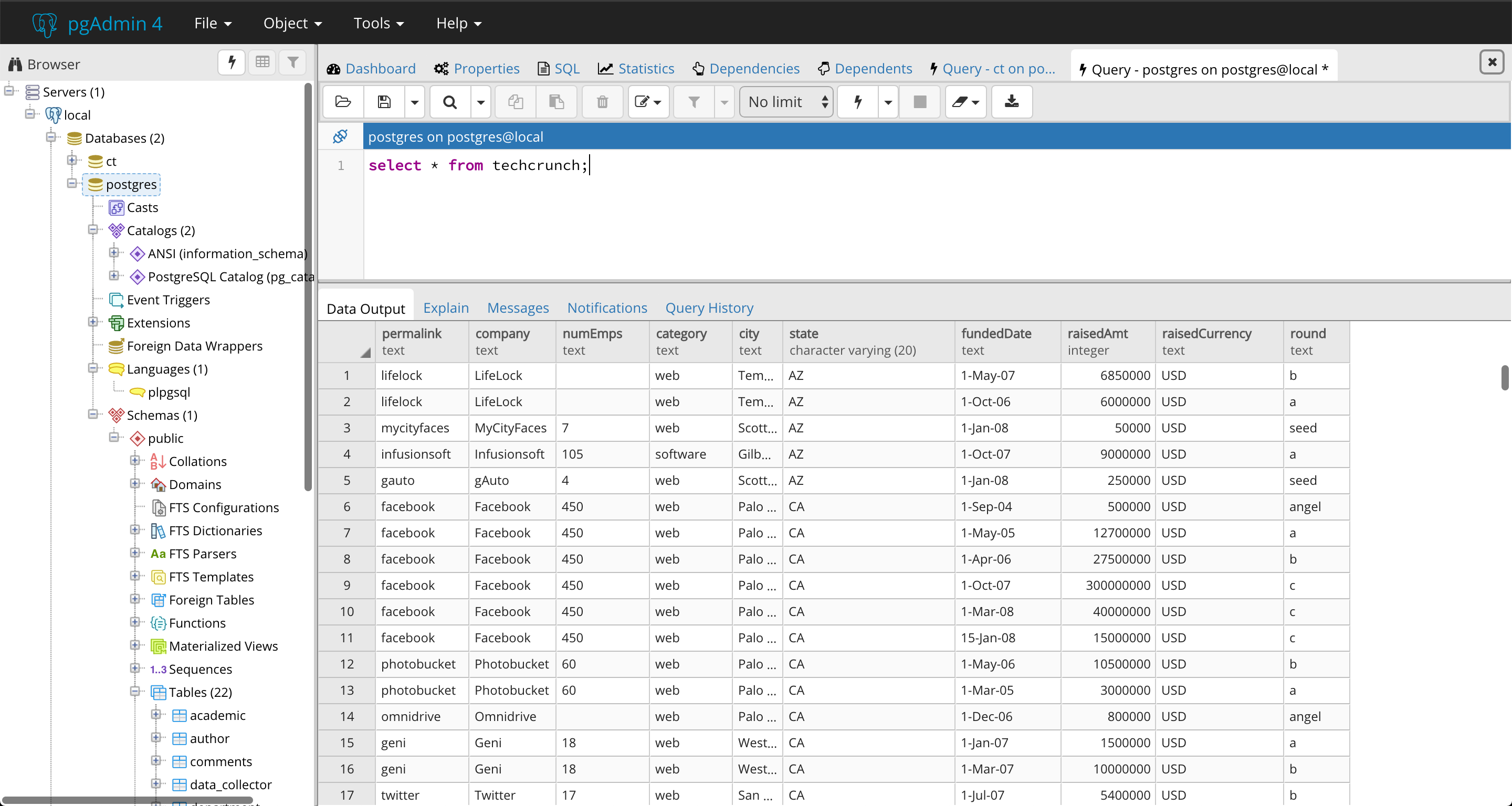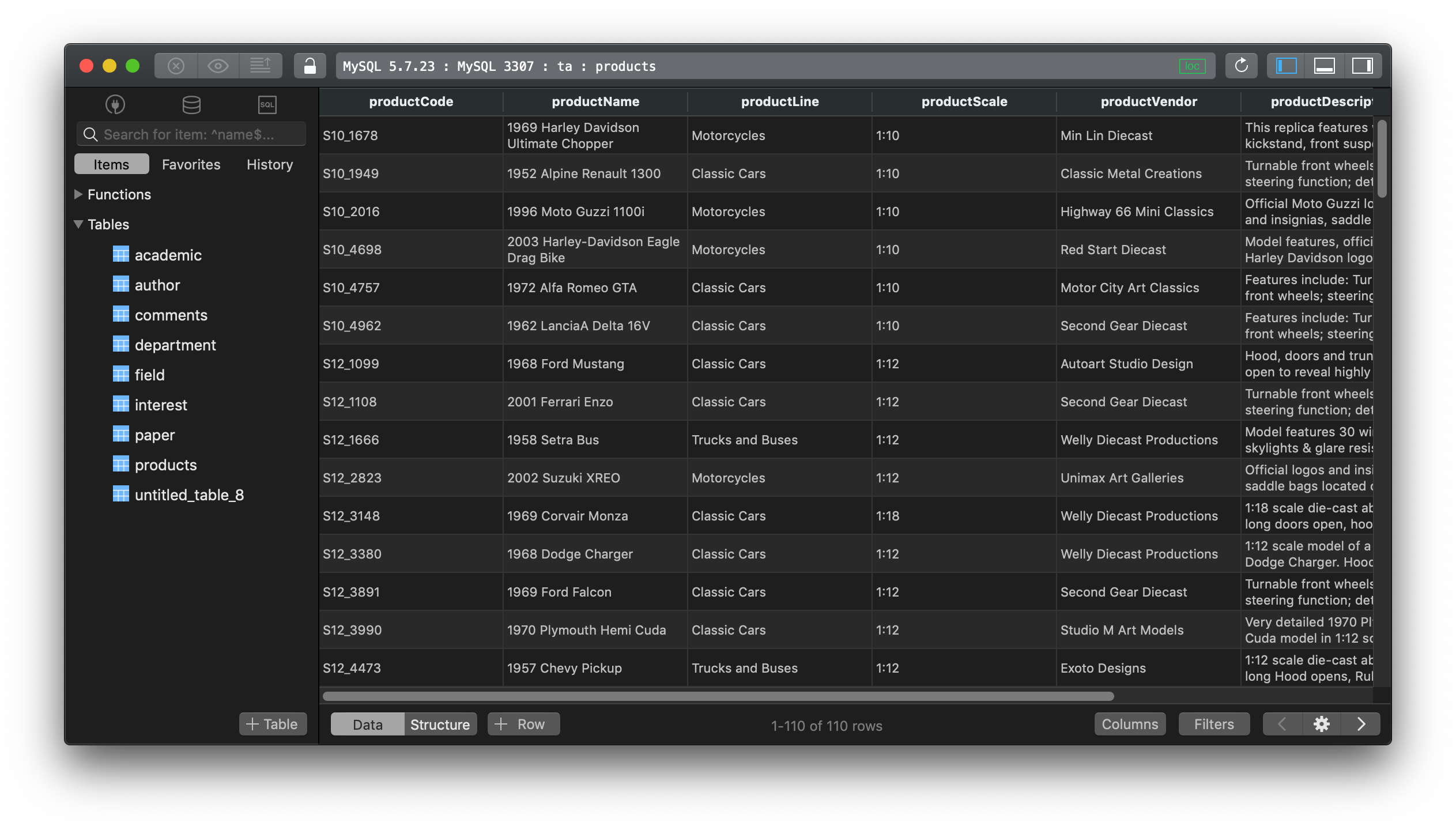Navicat vs pgAdmin vs TablePlus - Quick Comparison
In this post, we are going to have a quick comparison between Navicat, pgAdmin, TablePlus, with pros and cons of each tool. Let’s see which tool is better suited for your database management tasks.
1. Navicat
Navicat offers a powerful tool for both database development and administration.
-
Supported platforms: Navicat is cross-platform. It’s available on Mac, Windows, Linux. Navicat also has its iOS versions.
-
Supported Drivers: Navicat supports several popular databases: MySQL, MariaDB, MongoDB, Oracle, SQLite, PostgreSQL, and Microsoft SQL Server.
-
Pricing: Navicat is a commercial application with 14 days trial and it has many pricing schemes. You can either buy a special edition for MySQL with $119 for Non-Commercial Edition, $199 for Standard Edition, and $299 for Enterprise Edition; or you can buy Navicat Premium to work with all supported drivers at the price of $1299 for Enterprise Edition and $599 for Non-Commercial Edition.

Pros:
- It’s cross-platform and supports multiple drivers.
- Data and structure synchronization
- Visual query builder and report builder
- Excellent import/export options
- Supports many languages, including Polish, Russian, Japanese, Portuguese, Korean, Simplified Chinese, Traditional Chinese, Spanish, French, and English
- Compatible with other Navicat products: Navicat Monitor, Navicat Data Modeler, Navicat Report Viewer, and Navicat Data Model Essentials.
Cons:
- It’s expensive. A single machine license for the most standard version (MySQL) is already $299. If you work with more than one drivers, such as PostgreSQL, SQL Server, or SQLite, you will end up purchase the Navicat premium package at $1,299.
- It’s one of the most resource-intensive tools. It’s heavy and will consume a large portion of memory to run.
- Very few shortcut keys.
- The development cycle is very long, a new version is released every one or two year.
2. pgAdmin
pgAdmin 4 is a web application. The native binary is a wrapped version of the web app that runs a web server and web browser. Thus it has a high memory footprint and low performance.
-
Supported platforms: From the recent update to pgAdmin 4, pgAdmin has become a web app, so it can run on any computer with a web browser installed.
-
Supported Drivers: pgAdmin supports PostgreSQL only. It works with PostgreSQL 9.2 and above.
-
Pricing: pgAdmin is free and open source. Anyone can download from its website and use for free.

Pros:
- It’s free.
- It can be easily deployed on any server and accessed remotely using any web browser.
- The UI can be re-organized. The user interface elements are detachable panels that can be dragged around and re-arranged to be displayed stand-alone or in the tabbed browser.
Cons:
- It’s web-based
- It’s slower to respond.
- It’s slower to start.
- It uses more resources
3. TablePlus
With a native build and a lightweight size, TablePlus is a very handy tool for database management.
-
Supported platforms: TablePlus is built native for each platform. It started out with a native version for Mac, then another version for Windows, and a version for Linux was introduced recently as an alpha release. It also has an iOS version.
-
Supported Drivers: TablePlus supports a handful of relational databases: MySQL, PostgreSQL, SQLite, Microsoft SQL Server, Amazon Redshift, MariaDB, CockroachDB, Vertica, Oracle; and two popular NoSQL databases: Cassandra and Redis.
-
Pricing: TablePlus has a free version with full set of features which you can download and use forever, but there are some usage limitations. If you use it heavily, the license costs $59 to remove all those limitations.

Pros:
- Native build for each platform so it’s fast, lightweight, and stable.
- Clean and simple interface.
- Multiple drivers support
- Multiple conditions data filter
- Queries history and keyword binding favorite.
- Streaming results and async loading to show queries results faster and doesn’t block the UI.
- Very quick inline editing for table data and structure, you also can edit query results directly.
- Smart query editor with highlight syntax, instant autocomplete, SQL reformat.
- Multiple carets
- A plugin system to extend the app.
- Quick support. TablePlus releases new updates regularly and responds to users’ requests almost immediately.
Cons:
It currently lacks of some advanced features such as ER Diagram, database compare tool to Diff and Sync, etc.
4. Conclusion
Go with Navicat if you:
- Are comfotable with the cost
- Need a full-featured tool
- Don’t mind the slugginess
Go with pgAdmin if you:
- Work with PostgreSQL only
- Prefer a web app over a desktop app
- Need a tool that is completely free to get the job done
Go with TablePlus if you:
- Are a fan of native experience
- Work with multiple databases
- Want a modern design with better usability
- Want quick support & development cycle.